I never imagined I’d be writing a blog post while riding a bullet train through Japan but that’s exactly what’s happening this morning. I’m typing very quietly, in deference to the posted instructions to “Please be considerate of other passengers while using your computer (keyboard noise, etc)”. Outside the train’s window, the gorgeous countryside whizzes by as we race down the tracks at 260 km/hr (160 mph).
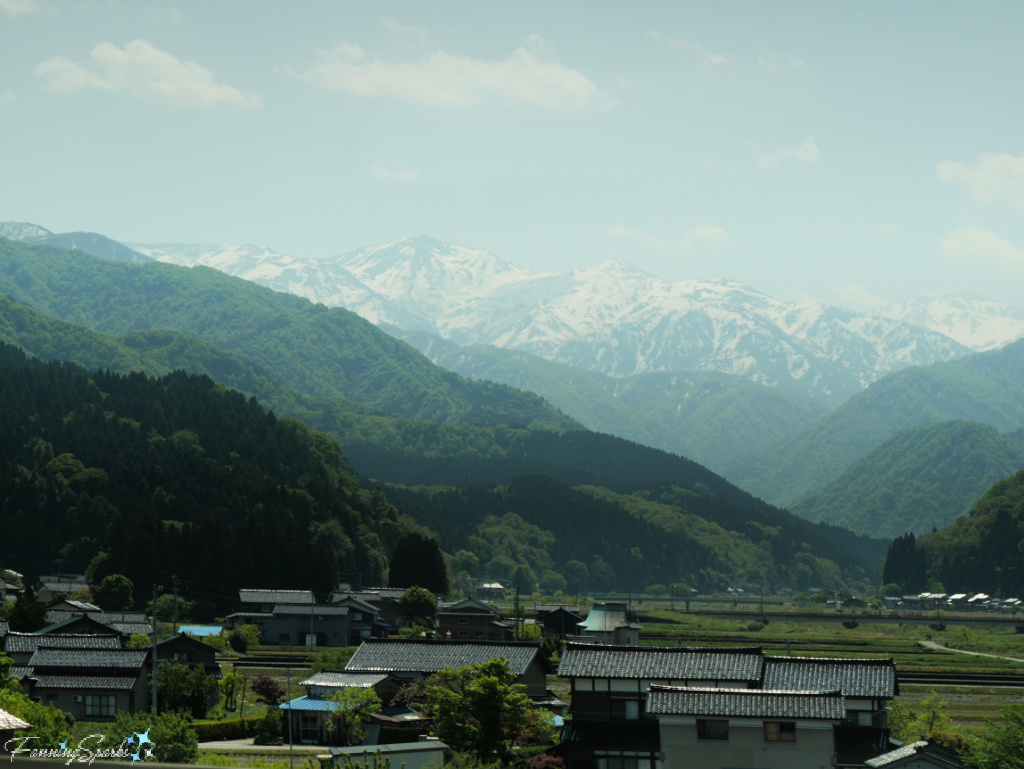 Japan’s train system is fast and remarkably efficient. We’ve traveled it several times over the last couple of weeks.
Japan’s train system is fast and remarkably efficient. We’ve traveled it several times over the last couple of weeks.
We spent the better part of this week in the delightfully charming city of Kyoto. With a reputation for culture and beauty, some people consider Kyoto to be the cultural and historical heart of the country. Amazingly, Kyoto is home to 17 UNESCO World Cultural Heritage Sites and over 2,000 temples and shrines.
One of the most popular UNESCO sites is the Kinkaku-ji Temple. It is known for it’s Golden Pavilion which, we were surprised to learn, is actually covered in gold leaf.
 Another nearby temple, Ginkaku-ji Temple, is known for its Silver Pavilion. Ironically, the Silver Pavilion is simply a nickname and the structure is covered in weathered wood not silver. While the temple itself wasn’t as spectacular as the Golden Pavilion, the surrounding gardens more than made up for it.
Another nearby temple, Ginkaku-ji Temple, is known for its Silver Pavilion. Ironically, the Silver Pavilion is simply a nickname and the structure is covered in weathered wood not silver. While the temple itself wasn’t as spectacular as the Golden Pavilion, the surrounding gardens more than made up for it.
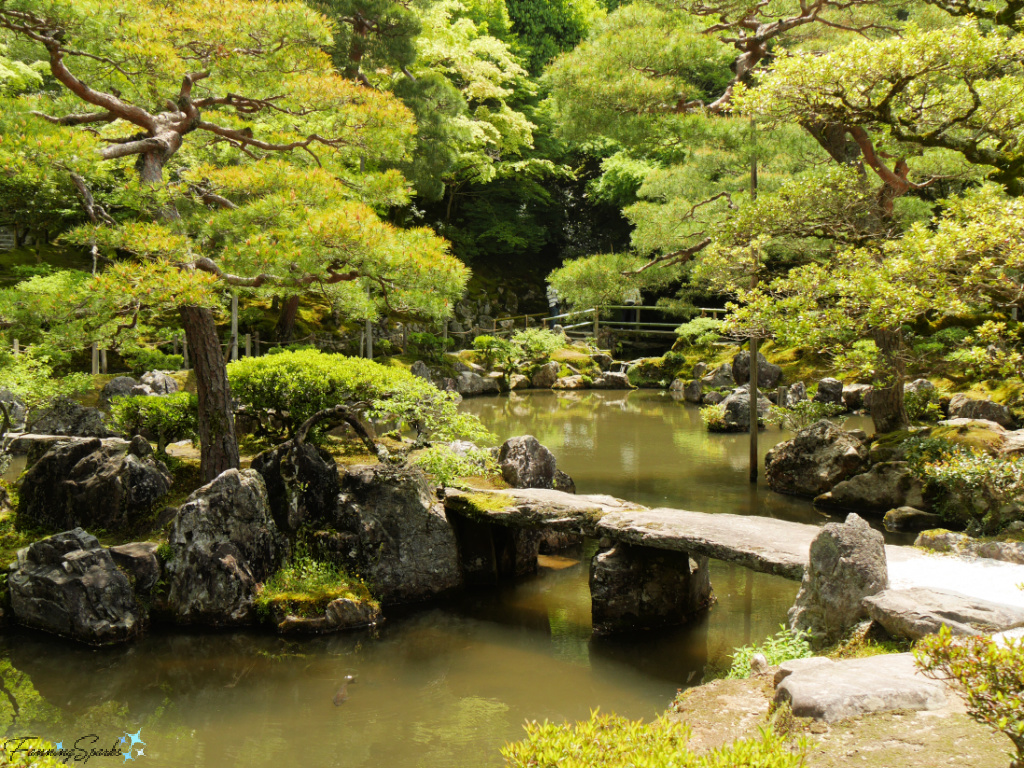
The moss gardens were spectacular especially in the vibrant green of spring.
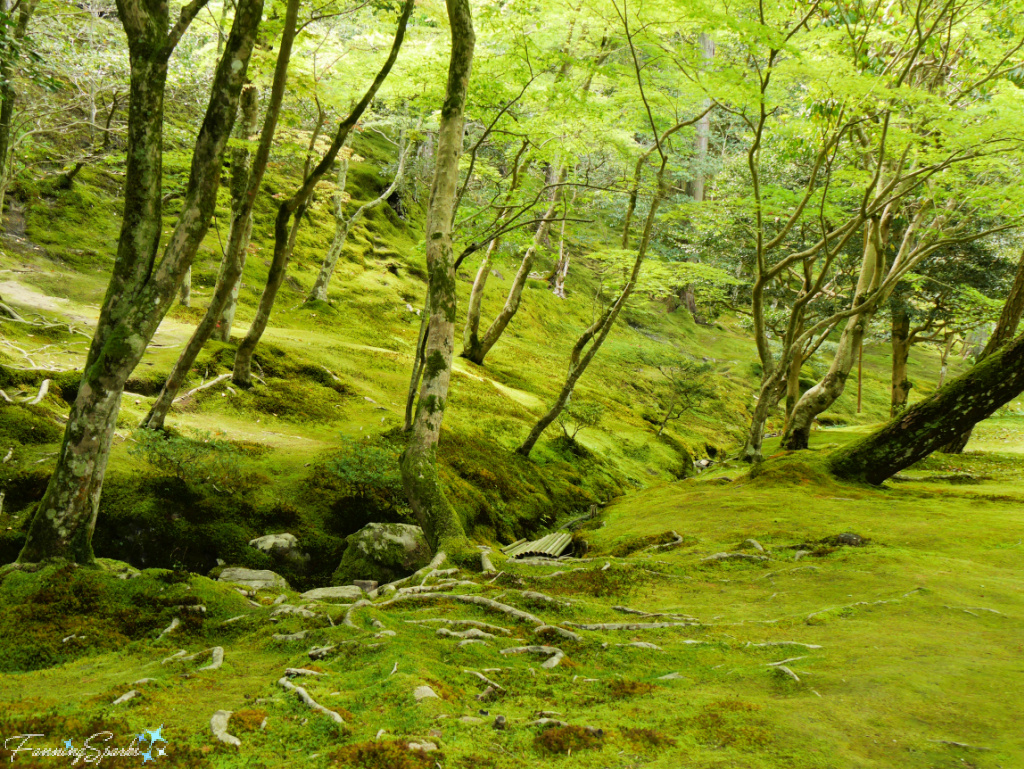
Gardens and natural spaces often surround shrines and temples. The small temple pictured below illustrates the point perfectly. It is surrounded by a lush, green forest, as viewed from Kameyama-Koen Park in Arashiyama.
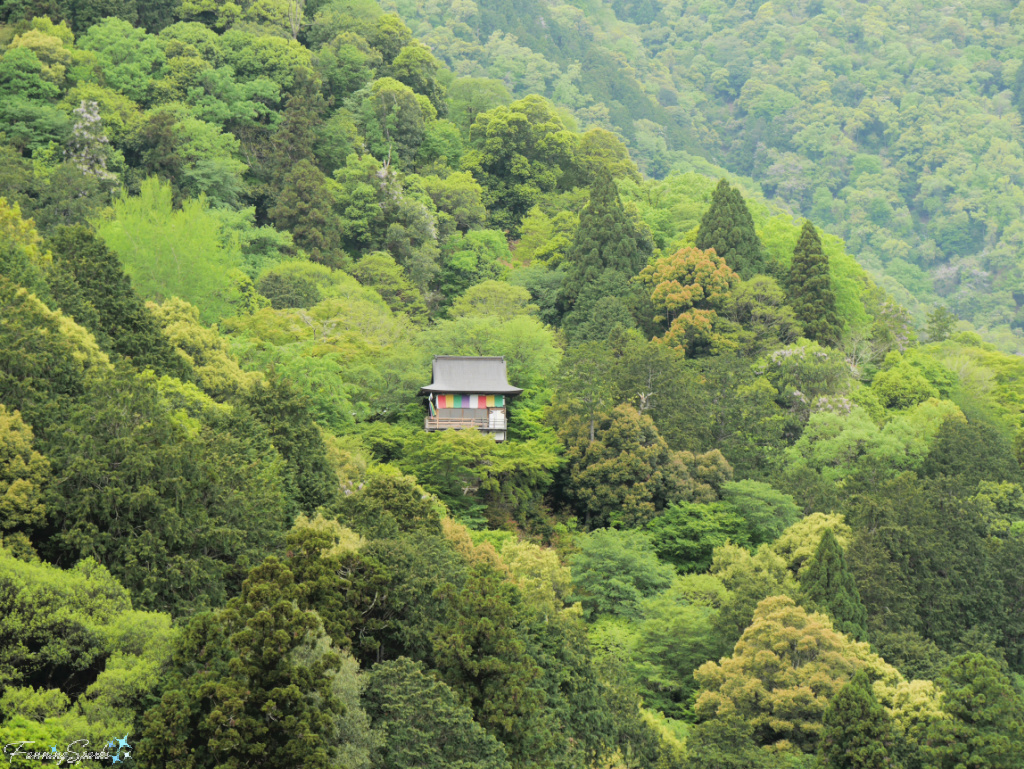 At the Fushimi Inari-taisha Shrine a 4-kilometre (2.5-mile) wooded path called the Senbon Torii leads visitors up the tranquil mountainside. But it’s not the natural beauty that captures one’s attention, it’s the tunnel of stunning vermilion torii gates.
At the Fushimi Inari-taisha Shrine a 4-kilometre (2.5-mile) wooded path called the Senbon Torii leads visitors up the tranquil mountainside. But it’s not the natural beauty that captures one’s attention, it’s the tunnel of stunning vermilion torii gates.
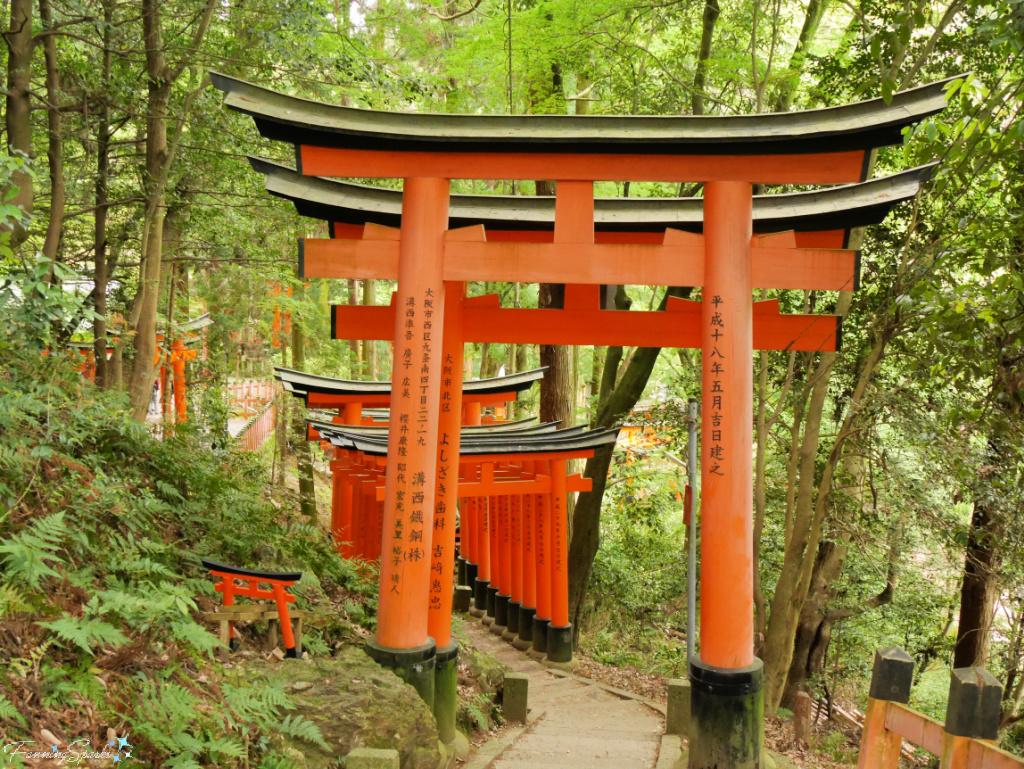
About 800 of these torii gates form the brilliant gateway with an additional 9,000+ in various sizes set amongst the shrines and pathways along the main route.
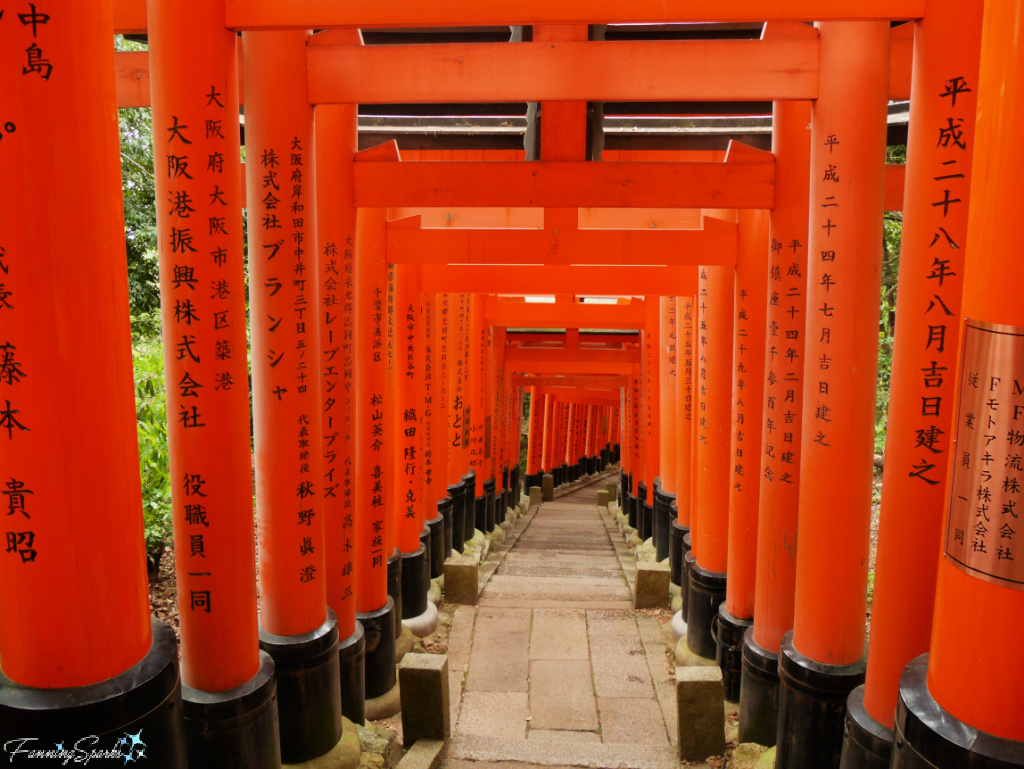
Pictured below is one of the numerous kitsune found in the Fushimi Inari-taisha shrines. Kitsune, often associated with the shape-shifting foxes from Japanese folklore, are regarded as messengers of the Shinto spirit Inari.
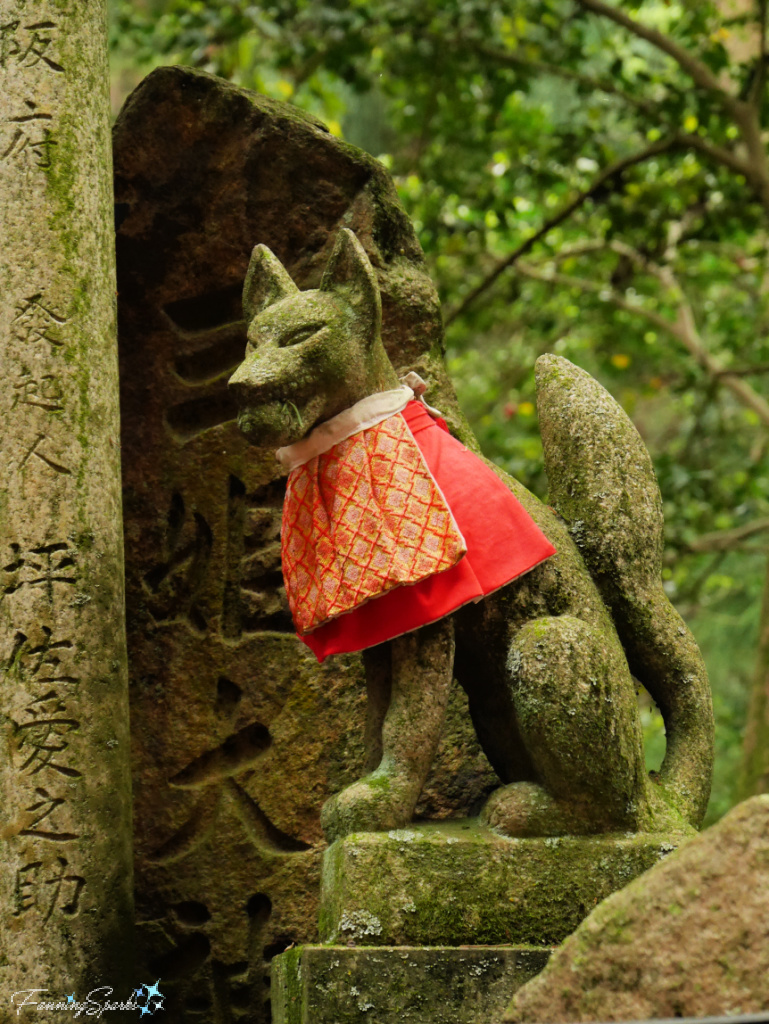 Typically, shrine and temple gardens are understated and rely on shades of green and earth tones. On occasion, however, special flowers are showcased and allowed to steal the stage. This trellis, draped in multiple shades of fragrant, purple wisteria, at the Tenryu-ji Temple Zen Garden is a case in point.
Typically, shrine and temple gardens are understated and rely on shades of green and earth tones. On occasion, however, special flowers are showcased and allowed to steal the stage. This trellis, draped in multiple shades of fragrant, purple wisteria, at the Tenryu-ji Temple Zen Garden is a case in point.
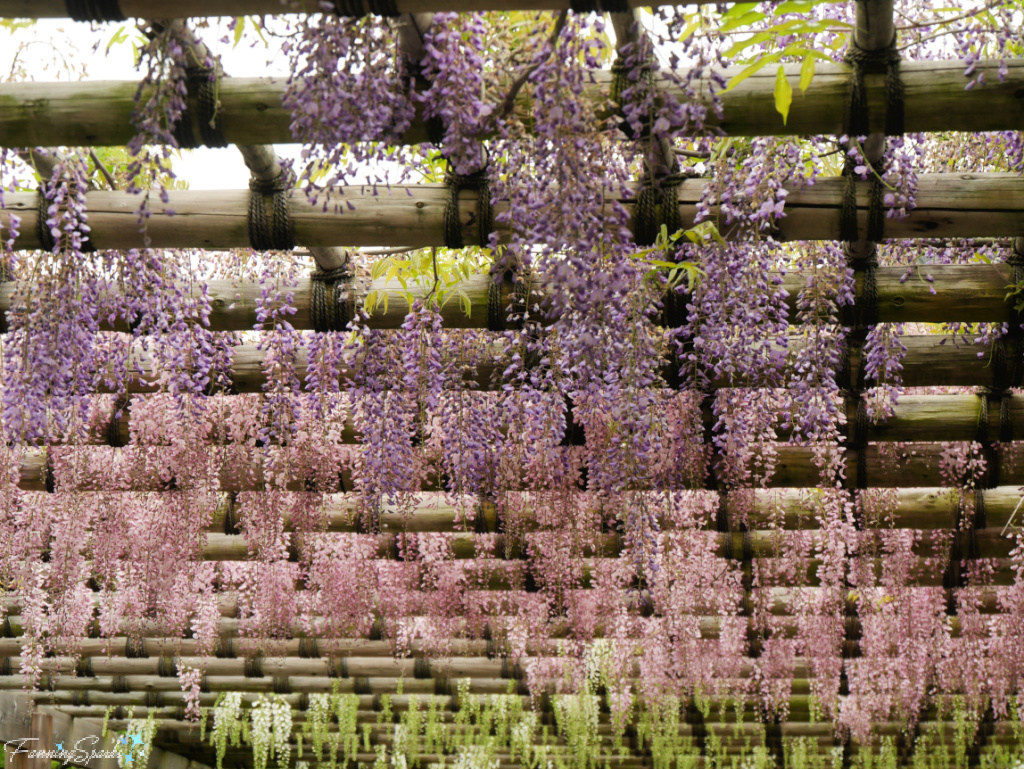
The wisteria at the Heian Shrine was also in bloom. Here it is complemented by azaleas in full bloom.
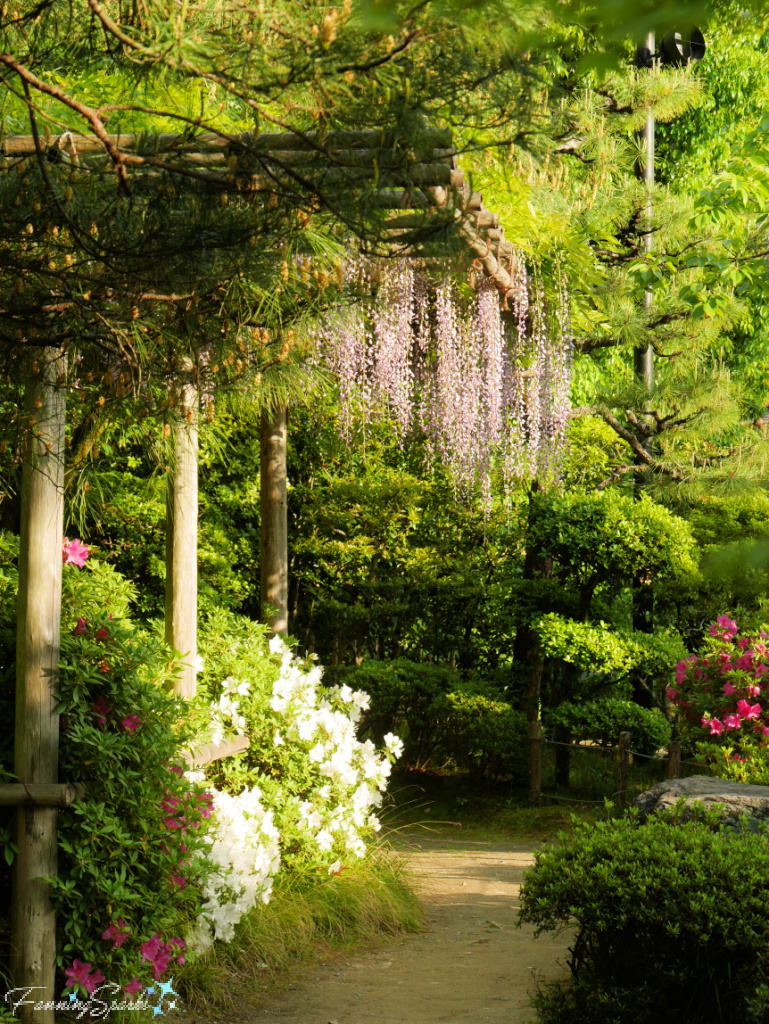
In this section of the garden, a serene pond is framed by a rustic torii gate.
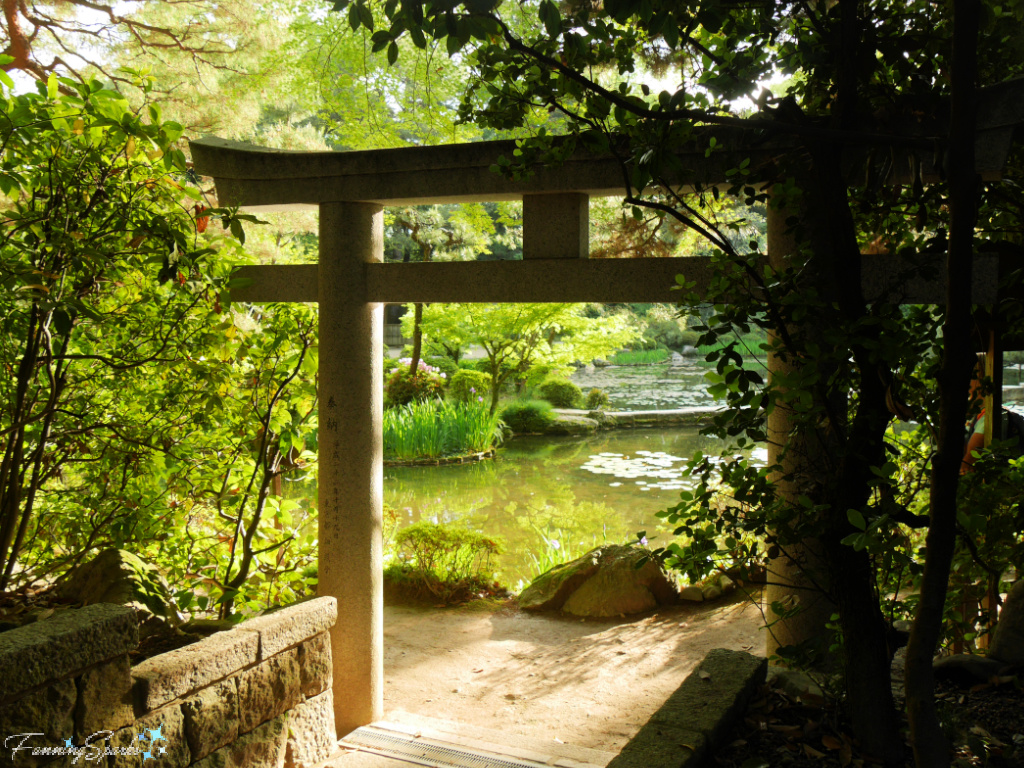 Here’s a look at the splendid Heian Shrine.
Here’s a look at the splendid Heian Shrine.
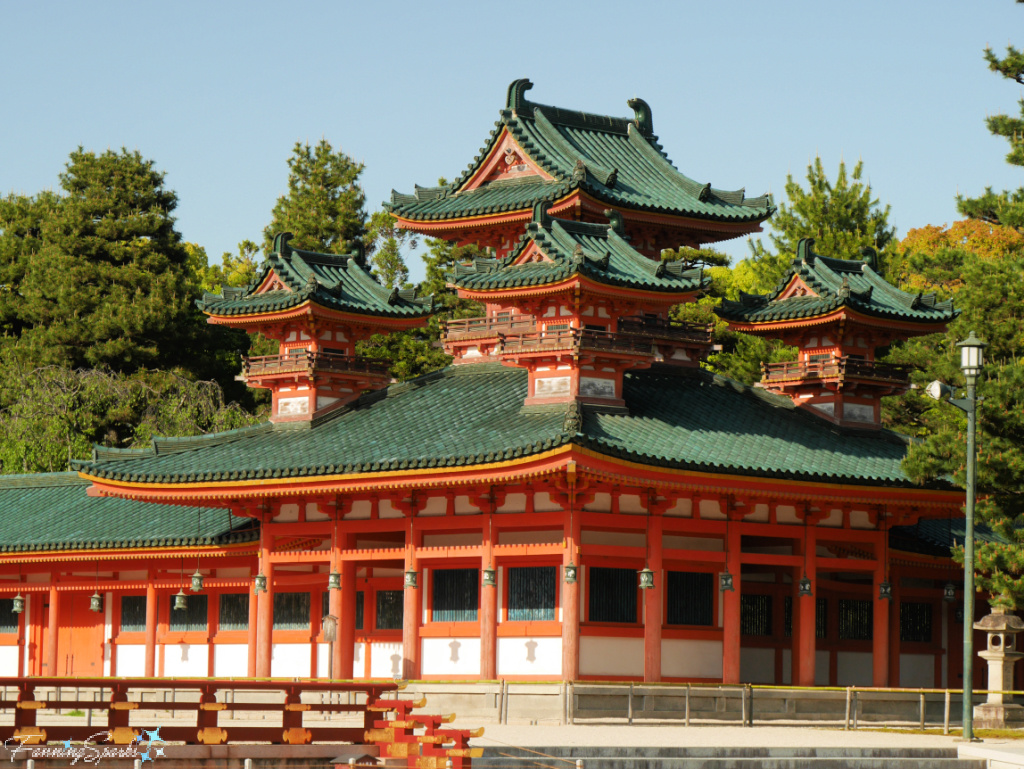 Peonies are often depicted in Japanese art especially as symbols of the summer season. They are said to symbolize everything from good fortune to beauty to fertility to nobility. We were fortunate to catch an exhibit of tree peonies at the Kyoto Botanical Gardens. Here’s a closeup of a Tree Peony ‘Toen’ (Paeonia suffruticosa ‘Toen’) covered in raindrops.
Peonies are often depicted in Japanese art especially as symbols of the summer season. They are said to symbolize everything from good fortune to beauty to fertility to nobility. We were fortunate to catch an exhibit of tree peonies at the Kyoto Botanical Gardens. Here’s a closeup of a Tree Peony ‘Toen’ (Paeonia suffruticosa ‘Toen’) covered in raindrops.
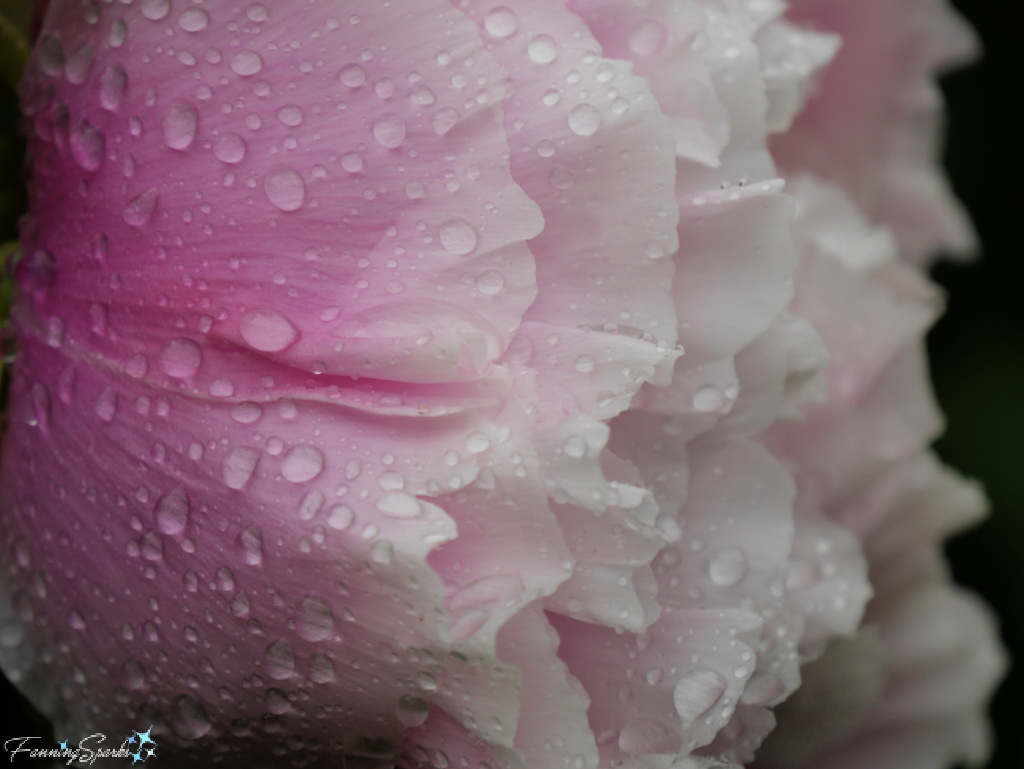 On a different note, the Arashiyama Bamboo Forest in Kyoto showcases the beauty of bamboo. This popular area is actually a natural forest with pathways for visitors.
On a different note, the Arashiyama Bamboo Forest in Kyoto showcases the beauty of bamboo. This popular area is actually a natural forest with pathways for visitors.

The forest consists mostly of mōsō bamboo (Phyllostachys edulis) which can reach heights of up to 28 meters (92 feet). It’s a splendid sight!
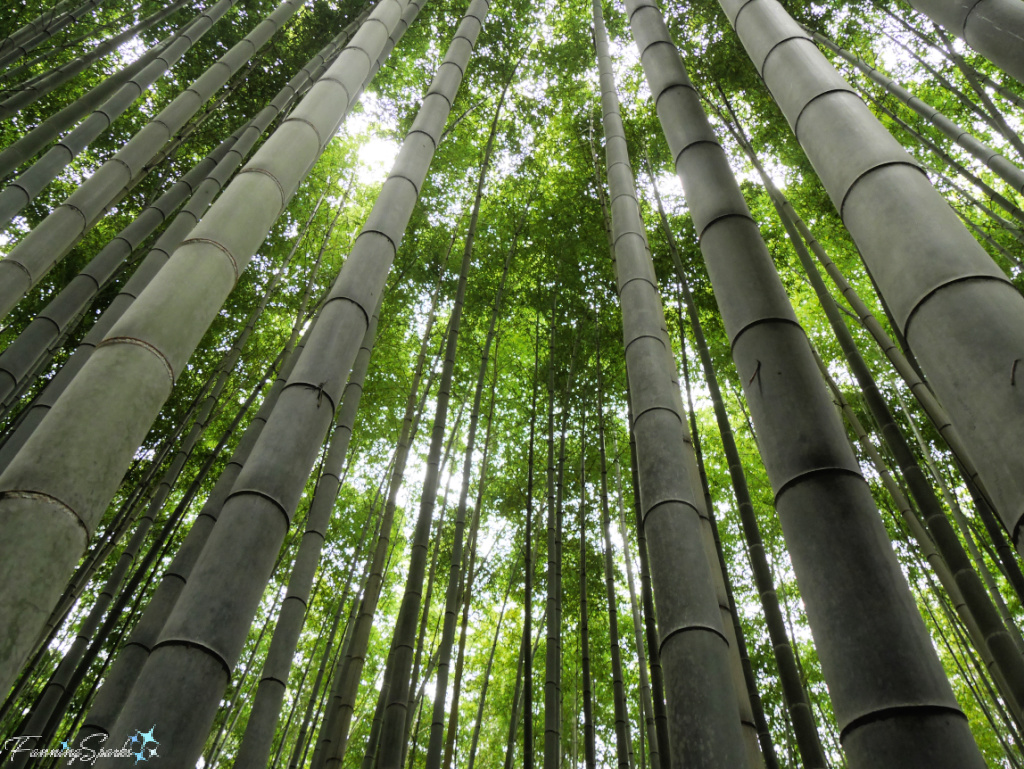
Looks like the train is about to reach Tokyo so it’s time to wrap up this week’s mini-blog post. This is the third in a series being posted from Japan.
. Postcards from Japan #1
. Postcards from Japan #2
. Postcards from Japan #3 (this post).
Enjoy,


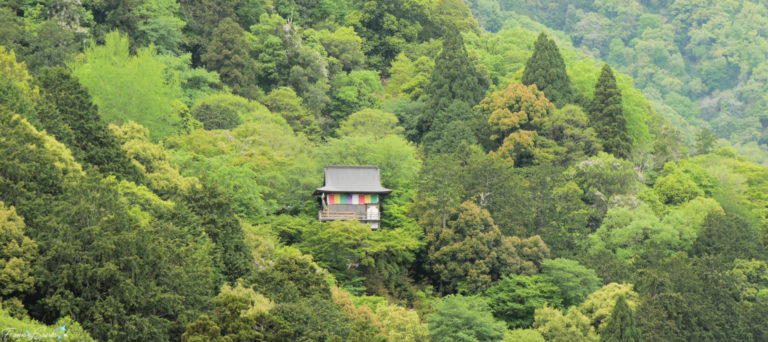


Comments are closed.